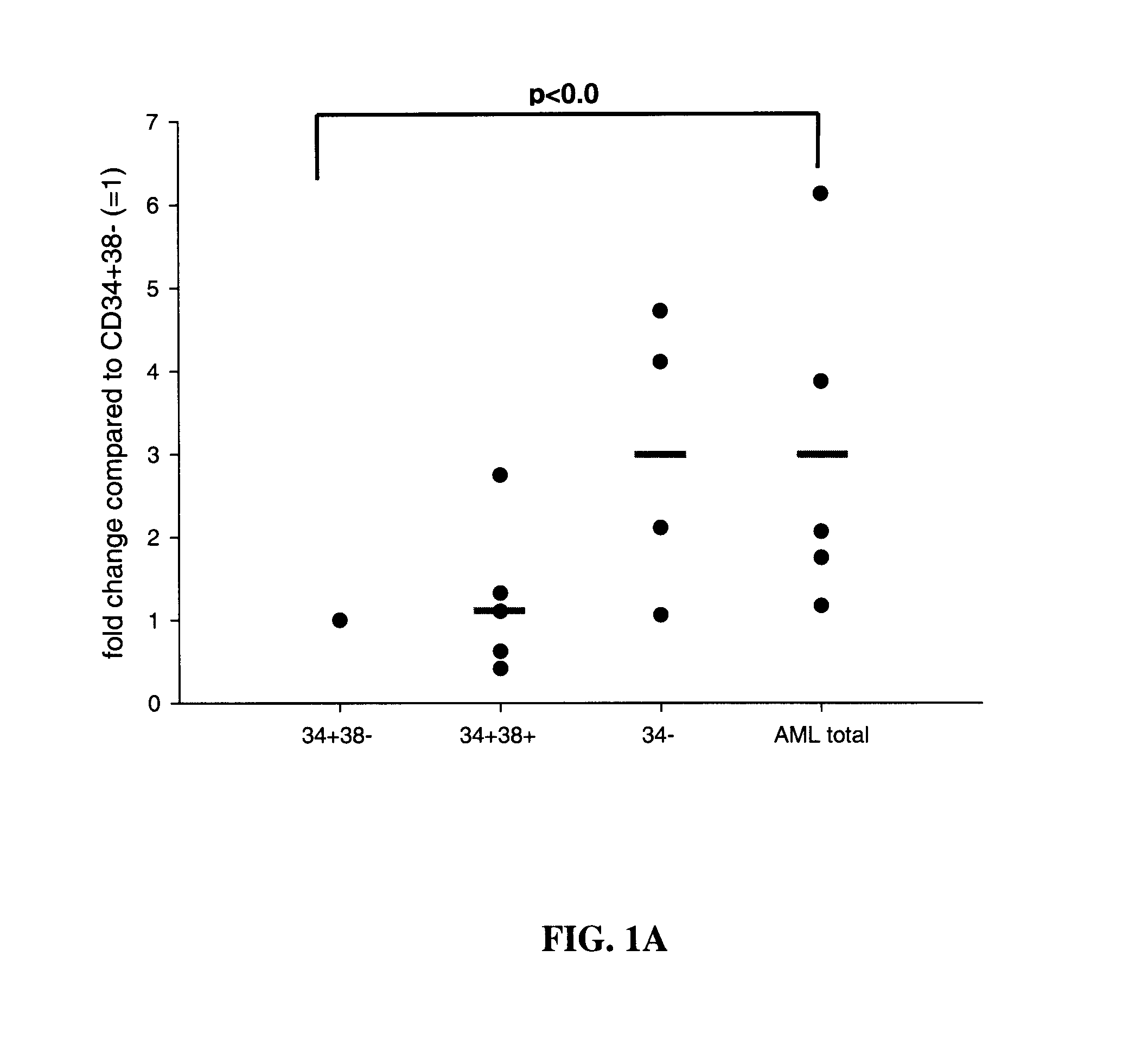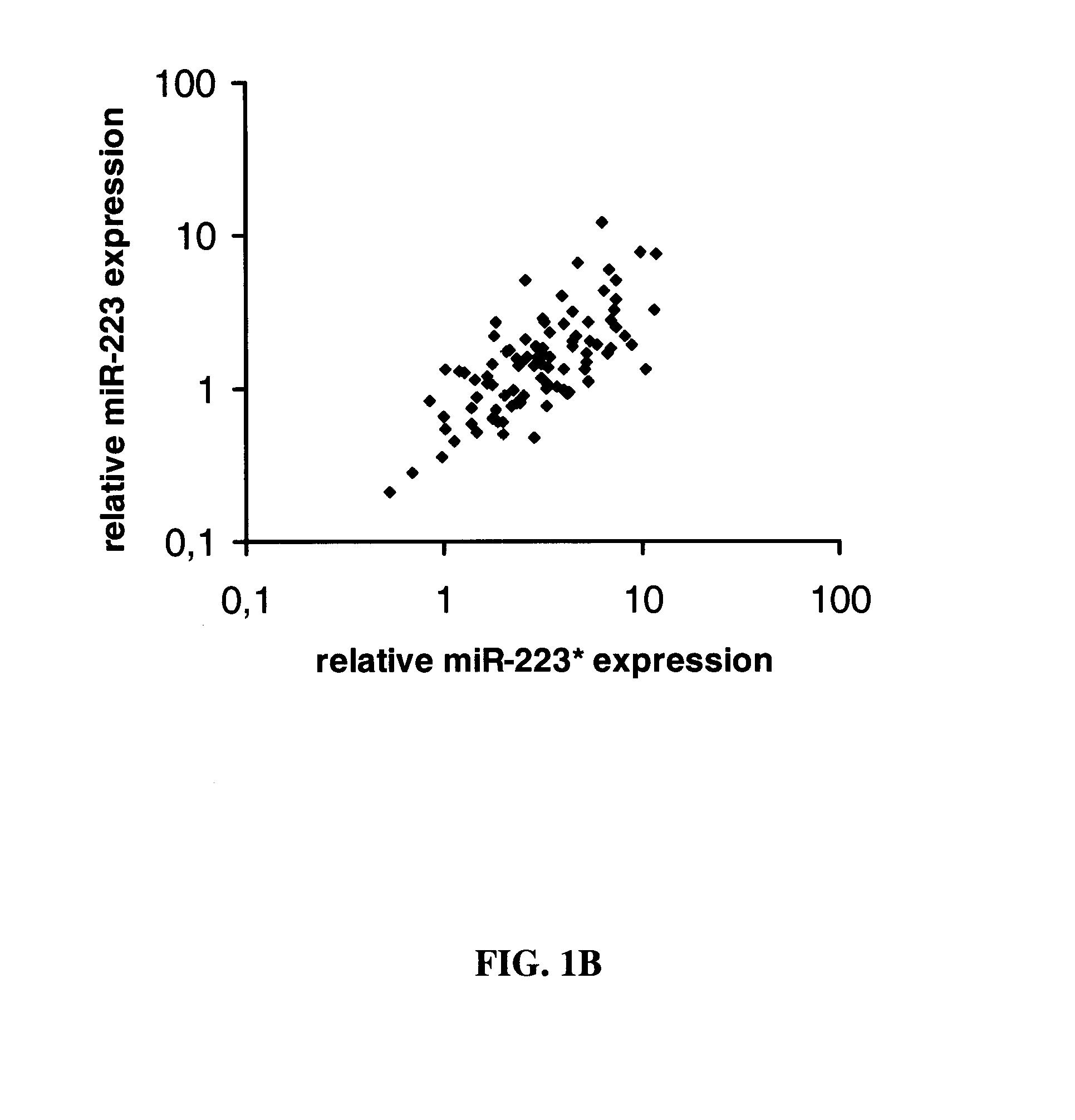Microrna compositions and methods for the treatment of myelogenous leukemia
a technology applied in the field of compositions and methods for the treatment of myelogenous leukemia, can solve the problems of poor candidate for high-dose chemotherapy, poor candidate for stem cell transplantation, poor candidate for chemotherapy or high-dose chemotherapy
- Summary
- Abstract
- Description
- Claims
- Application Information
AI Technical Summary
Benefits of technology
Problems solved by technology
Method used
Image
Examples
example 1
miR-223 can Decrease the Leukemic Activity of Murine Leukemia Models
[0086]Two independent and clinically relevant acute myeloid leukemia models driven by MN1 and NUP98−HOXD13 (ND13)+Meis114-17 were used to investigate the anti-leukemic activity of miR-223.
[0087]A retroviral vector system was used to over-express pre-miR-2235, including the precursor transcript of miR-223 with about 40 bp of flanking genomic region (Chen et al., 2004), in the MN1 and ND13+Meis1 cell lines using the empty vector (MDH-1) as control (ctl).
[0088]For all in vivo studies a murine transplantation model was used14. The in vitro assays included growth curves, colony forming assays (CFCs), FACS, and differentiation assays. Briefly, we cultured MN1 as well as ND13+Meis1 cells on feeder cells producing miR-223 retrovirus. Then, the infected cells were sorted for GFP positive cells, expanded in vitro and transplanted into mice. Every four weeks tail vein bleeds were performed and the percentage of GFP+ cells asse...
example 2
[0096]Expression profiling of miR-223 and miR-223star in human AML patient samples MiRNA expression profiling of sorted AML patient samples (FIG. 1A) revealed that miR-223 has lower expression levels in undifferentiated leukemia cell populations that comprise the leukemic stem cells. MiR-223 is relatively poorly expressed within the leukemic stem cell fraction compared to the bulk leukemic cells as demonstrated in FIG. 1A. Further, we could show by sequencing that miR-223 star expression levels can not only exceed, but also be highly differentially expressed in the myeloid progenitor ND13 cells and is drastically downregulated in the leukemic ND13+Meis1 cells. Expression profiling of miR-223 and miR-223star in human AML patient samples showed high expression of miR-223star and a correlation of miR-223star and miR-223 expression (FIG. 1B).
[0097]More specifically, expression profiling of miR-223 expression in AML patient samples revealed a significant negative correlation (p<0.05) wit...
PUM
| Property | Measurement | Unit |
|---|---|---|
| temperatures | aaaaa | aaaaa |
| temperatures | aaaaa | aaaaa |
| temperatures | aaaaa | aaaaa |
Abstract
Description
Claims
Application Information
 Login to View More
Login to View More - R&D
- Intellectual Property
- Life Sciences
- Materials
- Tech Scout
- Unparalleled Data Quality
- Higher Quality Content
- 60% Fewer Hallucinations
Browse by: Latest US Patents, China's latest patents, Technical Efficacy Thesaurus, Application Domain, Technology Topic, Popular Technical Reports.
© 2025 PatSnap. All rights reserved.Legal|Privacy policy|Modern Slavery Act Transparency Statement|Sitemap|About US| Contact US: help@patsnap.com



